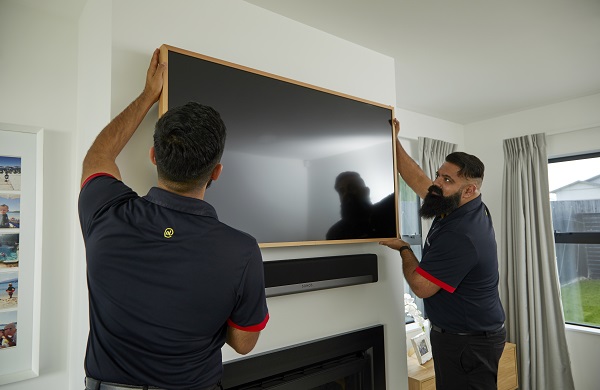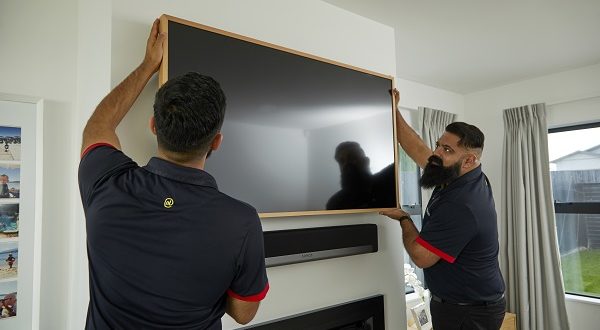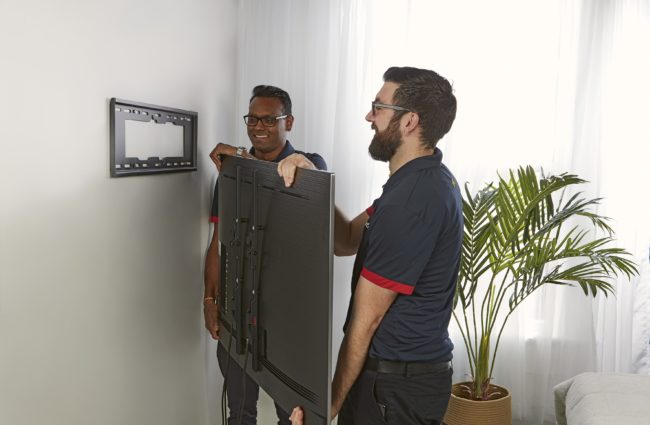Finding a new TV to suit your needs
Not that long ago, flat screens were the latest thing in the TV market. Then, the big choice came down to LCD or Plasma. Now, choosing a new TV means looking at screen size, screen type, picture quality, and connectivity – not to mention decoding acronyms like LED, OLED, HD, and HDR.
If you’re looking for a new TV, but you’re feeling lost in a sea of jargon and numbers, Noel Leeming Tech Solutions can help.
Get started with a quick buyers’ guide:
Selecting your screen size

These days, screens come in a wide range of sizes, from under 20 inches to over 80. The size you need depends on where your new TV is going – you’ll need to consider the size of the room, the wall or unit the TV will be mounted on, and how far away viewers will be sitting.
Screens are measured diagonally across and sizes are listed in inches. For smaller spaces with close-up viewing, like kitchens and bedrooms, look at screens under 32 inches. For larger bedrooms and smaller living areas, you’re looking at options in the 40-60 inch range. For a fully immersive experience or a particularly large lounge, 60+ is the way to go.
Of course, it also depends on personal preference – some people don’t want a TV to dominate their living space, while others want the best possible viewing experience, even if space is limited.
Which type of screen suits you?
Once you’ve got a screen size, you need to think about the type of TV. OLED, LED, and newer QLED screens all have slightly different ways of emitting light and producing an image:
- LED (Light-Emitting Diode) TVs are the most common, and usually the most affordable. They use LEDs to light the image, either from the edges or across the entire screen. Edge-lit options may be dimmer toward the centre, while full-array LEDs illuminate the entire screen for consistent picture quality.
- OLED (Organic Light-Emitting Diode) screens are made up of individual pixels that can light up and turn off independently. Because the pixels can go completely dark, OLED TVs offer darker blacks and more vibrant colours. They have quick refresh rates, and because they don’t need a backlight, they can be slimmer than other types of TV.
- QLED (Quantum Dot Light-Emitting Diode) TVs are a newer option. They work by placing a layer of minuscule dots in front of a standard LED panel. Each dot emits either red or green light, which combine with the blue of the LED backlights to create vibrant, lifelike colours.
- Curved screen TVs are another new option. The curve means the picture fills more of your vision, giving you a better viewing experience.
Picture quality you can see
Image quality has come a long way since the days of fuzzy broadcast television. Standard definition – 720X576 pixels – is the picture quality of a DVD. Anything with higher resolution is called High Definition, or HD.
There are several HD options available. Whether you’ll be able to tell the difference depends on the size of your screen, your vision, and your personal preferences – it’s always worth going in-store to see these screens for yourself.
- Standard HD TVs have a resolution of 1280×720 pixels, also called 720p.
- Full HD 1080 has a resolution of 1920×1080 pixels, giving you increased clarity. This is the resolution of Blu-ray movies, and is the current market standard.
- 4K Ultra HD offers a huge 3840×2160 pixels. This means better picture detail, sharper images, and smoother lines.
- HDR (High Dynamic Range) is an extra feature on some 4K TVs. It boosts the capacity of 4K by increasing colour and contrast, which means deeper, more life-like picture quality.

Making connections
Many Kiwis now use a streaming service such as Netflix or Lightbox, or watch TV ‘on demand’ through an app. Smart TVs let you access these services, and the internet in general, without the need for a computer or other device – you can simply use your remote to connect.
But not all smart TVs are created equal. Affordable, entry-level options will let you connect to popular streaming services, but often don’t let you access a web browser or other content. Higher-end models will usually have a built-in browser, plus a range of apps and services, so you can watch YouTube, listen to music, and even check social media through your TV. Of course, to make sure you can enjoy your content without pauses or glitches, you’ll need a high-speed wireless network or ethernet connection.
On a practical level, it’s also important to make sure your new TV has the inputs and outputs you need. If you want to connect a Blu-ray or DVD player, a gaming console, or other devices, make sure your TV has enough spots for HDMI cables. If you’re planning to mount your TV on the wall, look for side or bottom inputs so it can sit flat.
Still feeling overwhelmed by the search for your new TV? Talk to the team at Noel Leeming Tech Solutions for help. They’re great at listening to your needs and wants and helping you choose the right TV. You can also check out our extended buyers’ guide for more information.










Join the Discussion
Type out your comment here:
You must be logged in to post a comment.